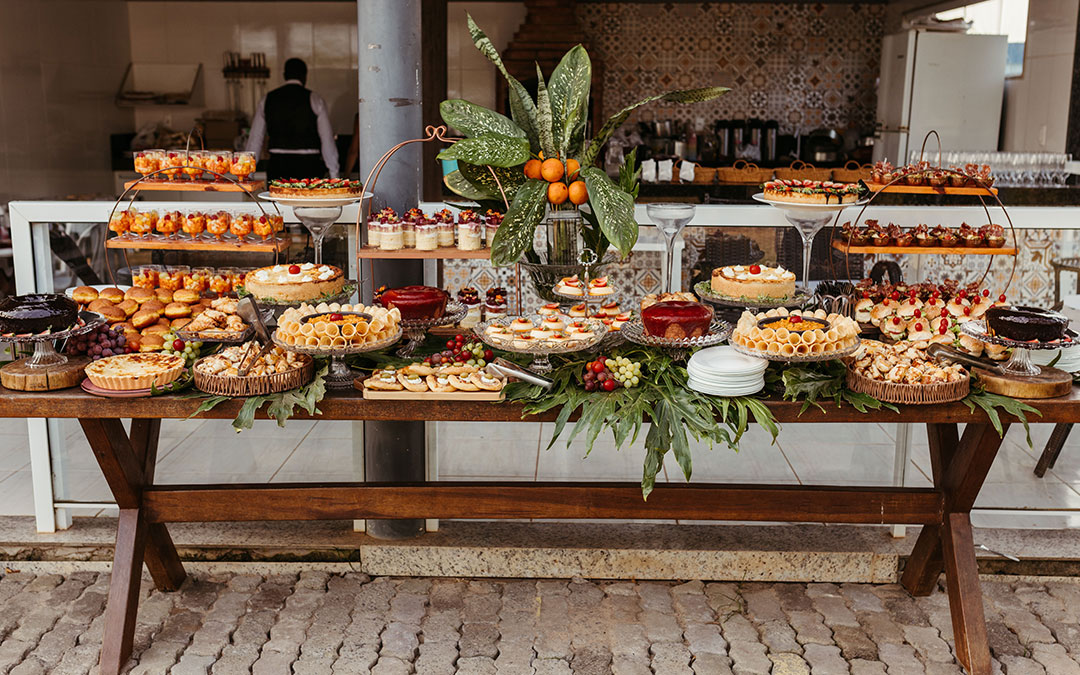
Why Good Food Matters: The Impact of Catering on Corporate Culture
The Science of Taste: How Culinary Experiences Shape Impressions
At the intersection of gastronomy and psychology, the science of taste plays a pivotal role in shaping the impressions made during corporate events. Research suggests that the sensory perceptions associated with food aroma, flavor, and presentation can significantly influence people’s emotions and memory retention. A well-crafted culinary experience engages not just the palate but all five senses, creating a memorable imprint that can last well beyond the event. For instance, when guests savor an exquisitely prepared dish, the experience intertwines with the brand’s ethos, fostering a strong connection between the food and the organization. This phenomenon is often leveraged in corporate scenarios, where the right catering can convert a simple business meeting into a powerful storytelling opportunity, reinforcing a company’s mission and values through the choice of menu and ingredients.
Creating Connections: The Role of Food in Building Professional Relationships
In the corporate world, networking is vital, and food acts as a social lubricant that can help bridge connections between colleagues and clients. Dining experiences foster conversations and enhance interactions, breaking down barriers that may exist in a formal office setting. When individuals share a meal, there’s an inherent shift in dynamics; the act of sharing food cultivates camaraderie, empathy, and trust. Companies seeking to strengthen internal relationships may find that hosting periodic catered lunches or team-building dinners can cultivate a culture of openness and collaboration. Likewise, when entertaining clients or partners, thoughtful catering choices can communicate a sense of care and consideration, demonstrating the value placed on the relationship.
Branding Beyond the Boardroom: How Catering Reflects Company Values
Catering is an extension of a company’s brand, often embodying its values and culture. When selecting a catering service, organizations should consider how their choices reflect their brand identity. For instance, a tech startup might embrace contemporary, innovative catering styles, such as food trucks or interactive food stations, embodying creativity and a modern approach. Conversely, a legal firm may opt for classic, refined dining orchestrated with detail-oriented plated service, reflecting professionalism and tradition. Moreover, including local ingredients and sustainable practices not only supports community growth but also communicates a commitment to environmental responsibility, which resonates with an increasingly socially conscious audience. Thus, catering decisions transcend mere sustenance; they serve as a narrative device that reaffirms corporate values at every event.
Choosing the Right Catering Style: From Formal Dinners to Creative Buffets
The Elegance of Plated Service: When to Opt for Formal Dining
Plated service is synonymous with elegance and sophistication, making it an ideal choice for formal occasions when selecting corporate events catering services, such as galas, awards dinners, or high-stakes business meetings. This catering style involves individually plating meals and serving them at each guest’s place, which not only enhances the experience but also allows for greater control over portion sizes and presentation. Plated dinners provide a sense of exclusivity and can be tailored to meet specific dietary requirements, ensuring that every guest is accommodated seamlessly. Furthermore, the choice of plated service within corporate events catering services can elevate the event’s status, making attendees feel valued and significant. By melding fine dining with corporate intent, organizations demonstrate an attention to detail that reinforces their commitment to excellence.
Buffet vs. Plated: Understanding the Best Options for Your Event
When planning a corporate gathering, one of the most significant considerations is the choice between a buffet and a plated service. Buffets offer a casual, festive atmosphere where guests can mingle freely, deepening networking opportunities and encouraging informal interactions. They allow for a diverse selection of dishes, accommodating varied tastes and dietary preferences. However, one must be mindful of the potential for overcrowding or extended wait times, which may moderate the event’s pace. On the other hand, plated service, while more formal and structured, can facilitate a smoother dining flow, keeping the event on schedule while ensuring that every dish is perfectly presented. Ultimately, the choice should align with the event’s objectives, guest profiles, and the desired level of engagement. A helpful approach is to blend styles by offering a buffet during casual mingling and transitioning to plated service for a more formal segment of the event.
Food Stations: An Interactive Approach to Modern Corporate Catering
In recent years, food stations have risen in popularity, capturing the essence of interactivity and creativity in corporate catering. This format allows guests to customize their meals, promoting engagement and adding a layer of fun to the dining experience. Whether it’s a live cooking station for pasta or stir-fry or a gourmet slider bar with various toppings, these stations create an ambiance of exploration and enjoyment. Additionally, food stations can cater to a broader range of dietary restrictions by providing options, thereby ensuring that all guests feel included. This innovative approach not only enhances the culinary experience but also encourages organic conversations and connections, making it a perfect fit for networking events or team-building exercises.
Crafting a Memorable Menu: Trends and Tips for Unique Corporate Catering
Culinary Trends: Incorporating Seasonal and Local Ingredients
The pursuit of seasonal and local ingredients is more than a trend; it’s a commitment to quality, sustainability, and authenticity. Catering professionals are increasingly emphasizing farm-to-table practices, sourcing fresh produce, meats, and dairy from local farmers and suppliers. This not only guarantees peak flavor and nutrition but also supports local economies and reduces the environmental footprint associated with long-distance food transport. For corporate events, this approach can enhance the menu’s appeal, as guests appreciate the freshness and sustainability of their meals. Furthermore, presenting dishes that reflect seasonal ingredients allows the culinary team to showcase their creativity, emphasizing the importance of the agricultural cycle and fostering a deeper connection between guests and the cuisine served, transforming meals into seasonal celebrations.
Dietary Inclusivity: Catering to Diverse Palates and Preferences
As workplaces become increasingly diverse, catering must adapt to reflect varying dietary preferences and restrictions. From gluten-free and vegan diets to cultural dietary laws such as Halal or Kosher, a successful corporate catering service must prioritize inclusivity to ensure all guests feel valued and respected. This can be achieved by working with caterers who understand these needs and can creatively craft menus that cater to all. Offering a wide range of options not only satisfies individual preferences but also showcases an organization’s commitment to inclusivity and employee well-being. Encouraging feedback from attendees on dietary preferences prior to the event can also aid caterers in crafting a menu that is as diverse as the team it serves, leaving a lasting positive impression.
Pairing Flavors: How to Match Food with Optimal Beverages
The art of flavor pairing is essential in creating a cohesive and enjoyable dining experience during corporate events. Thoughtfully selected beverages can elevate a meal, enhancing the taste and creating a harmonious balance on the palate. When choosing wines, beers, or cocktails to accompany each dish, consideration should be given to flavor profiles, acidity, and texture. For instance, a rich, creamy pasta may be best paired with a crisp Sauvignon Blanc, which can cut through the richness, while a zesty dessert may shine with a sweet Riesling. Crafting a beverage pairing menu can serve as a sophisticated conversation starter while showcasing your organization’s dedication to culinary excellence. Engaging a sommelier or beverage expert during the planning stages can also ensure that the pairings are not only enjoyable but memorable.
The Art of Presentation: How Visual Appeal Elevates Your Event
Table Aesthetics: Designing a Feast for the Eyes
Visual presentation plays a crucial role in the overall impact of a corporate gathering’s catering experience. Aesthetically pleasing table settings can transform a simple meal into a remarkable dining experience, reinforcing the event’s theme and purpose. Elements such as elegant table linens, carefully arranged centerpieces, and appropriate dishware come together to create a cohesive visual appeal. Beyond the table, food presentation is equally vital; creatively plated dishes or vibrant buffet displays entice guests and stimulate interest even before the first bite. Caterers can work collaboratively with event planners to ensure that every detail aligns with the intended visual narrative, which can elevate the overall mood and atmosphere of the event, making it memorable for attendees.
Beyond the Plate: Innovative Serving Styles That Wow
As catering evolves, innovative serving styles are gaining traction, shifting away from conventional methods to more engaging and interactive experiences. Options such as shared platters encourage communal dining and discussions, while unique serving styles like miniaturized portions or amuse-bouches provide guests with variety while keeping the event dynamic. Consider incorporating creative elements such as ethnic street food carts, cuisine-inspired cocktails, or dessert bars featuring an array of sweet treats. These novel approaches not only satiate appetites but also serve to entertain and engage guests, causing them to leave with fond memories and a unique impression of the host company.
Creating a Cohesive Theme: Aligning Food Presentation with Event Goals
Every corporate event has specific objectives, whether it be to celebrate an achievement, foster networking, or reinforce brand identity. Aligning food presentation and culinary choices with these goals is crucial for coherence and creating a lasting impact. For instance, a company celebrating its commitment to sustainability might choose a menu that prominently features organic and local ingredients served in eco-friendly containers. Conversely, a high-tech firm unveiling a new product may opt for modern presentation styles and experimental flavors that reflect the cutting-edge nature of their work. Ensure that the catering experience encapsulates the essence of the occasion, making it a seamless component of the overall event narrative.




